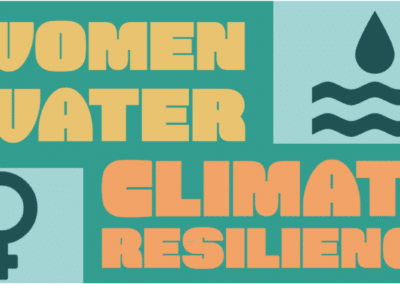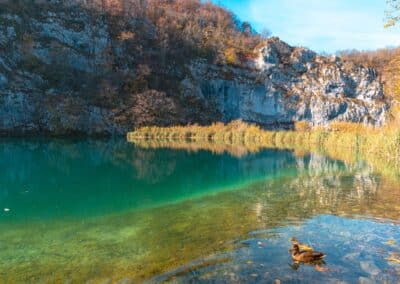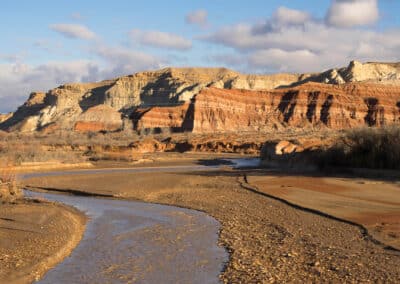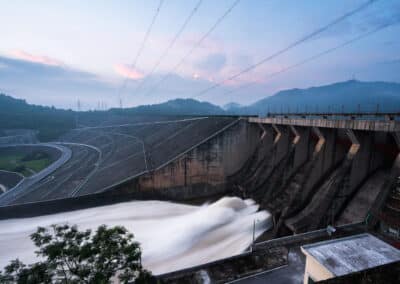Protecting our drinking water is essential to preserving our own health and economy and that of future generations. Water is a precious resource and it’s our duty to help conserve the watersheds that are the source of our water, protect our shared water resources from pollution, practice water conservation, and plan to protect water for future community health and economic vitality.
Consumer behavior and water use has a direct impact on the cost of providing safe drinking water to the community. The fewer pollutants that enter our lakes, rivers and underground water sources before they reach the treatment plants and the more responsible we are with consumption, the better it is for our communities and for the planet. Understanding what contaminants and threats exist and how we address these issues are important ways to help protect our water supply sources.
Source Water Protection Planning
In the United States, 9 out of 10 people get their water from one of more than 148,000 public water systems.1 To make sure water from these systems is safe to drink, federal, state, and local authorities regulate and monitor public water systems. The Environmental Protection Agency (EPA) is the federal arm that’s responsible for implementing and enforcing the Clean Water Act and the Safe Drinking Water Act, along with other major environmental statues. These laws have dramatically improved the environment and public health in this country, but as we’ve seen from recent news in places like Jackson, MS significant challenges still remain.
Since its enactment in 1974, the Safe Drinking Water Act (SDWA) has remained the regulatory framework for protecting our nation’s drinking water. The 1996 reauthorization of the Safe Drinking Water Act established requirements for the development of Source Water Assessment Plans (SWAP). At that time, I was working in the Pennsylvania Department of Environmental Protection, where we were implementing some of the earliest websites for citizen access to environmental information.
Under most state programs, water utilities must 1) assess source water conditions, 2) develop and implement source water protection plans and programs, and 3) promote source water protection to the communities they serve.
As part of the assessment and planning process, utilities identify the drinking water supply’s sources and potential sources of contamination; and develop emergency plans in the event of a spill or accident that may threaten those sources. With Source Water Protection plans in place, community water systems are better prepared to take actions to prevent or minimize contamination before water arrives at a supplier’s treatment plant.
The Challenge: Meeting the Ever Changing Needs of an Ever Changing Environment
Historically, utilities do assessments and update plans infrequently since the focus is usually on spill prevention and response. With increased awareness and attention focused on the quality of drinking water, and new technologies that provide more real-time information, this is an area ready for transformation.
While effective source water protection can help utilities reduce the cost and complexity of their treatment operations, some community water systems still do not take the step of regularly updating their assessment and protection plans due to complexity and costs.
Some public water systems have not updated their SWAP since the first one was created in the late 90’s. Others have done updates once every ten years, with minor updates every few years. Some utilities do these infrequently due to costs – a typical SWAP may cost hundreds of thousands of dollars – and competing priorities.
Community water system leaders are seeking better ways to understand current and future risks to their source water, while addressing growing consumer concerns. According to a 2021 Gallup poll2 57% of Americans worried “a great deal” about contaminated drinking water quality. It is the top environmental concern among Americans according to the poll. Proactively, community water systems are seeking better ways to understand current and future risks to their source water, and future-proof against increased risks from stormwater and agriculture runoff, climate change impacts, and other potential hazards to drinking water sources.
System managers want to future-proof not only against unplanned spills, but they also want to consider increased risks from stormwater and agriculture runoff, climate change impacts, and other potential hazards to drinking water sources like saline contamination; however, the costs of creating SWAPs on a more frequent cycle limit their ability to address these critical issues.
A Modern Solution
True Elements provides easy to use, cost effective, risk management capabilities to assess watershed health and site-specific localized risks. These tools allow community water systems to better understand watershed and source water health, while providing forecasts that project multiple scenarios of the future.
The incentive for agencies, utilities, and landowners to improve watershed management is faster, less expensive, and more effective planning processes. Public Water Systems can reduce the time and cost of creating an effective source water assessment. They can significantly reduce the amount of time and budget spent on engineering and planning before taking action. And they can create a more standardized approach to modeling that could be applied to multiple watersheds.
Our platform provides comprehensive reports, maps, and insights for watersheds throughout the United States. The platform has an easy to use, comprehensive data service to allow community water systems and stakeholders to address water and land management problems and source water protection requirements.
Users can identify and prepare for near real-time, structural issues, and potentially dangerous or expensive water-related and climate risks along with a forecast of “risk creep” into the future. By doing so, community water systems can prepare for necessary mitigation measures to reduce their risk or proactively prepare for new source water requirements.
- https://www.epa.gov/dwreginfo/information-about-public-water-systems
- https://news.gallup.com/poll/347735/water-pollution-remains-top-environmental-concern.aspx
Kimberly Nelson
Chief Operating Officer, True Elements





